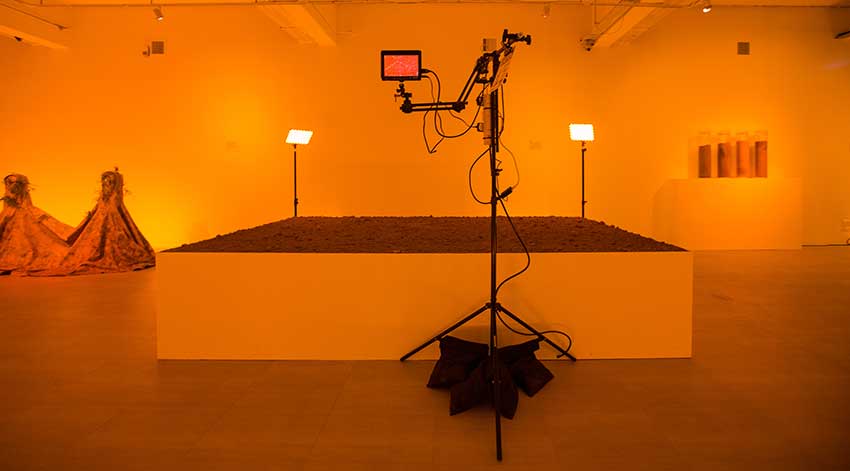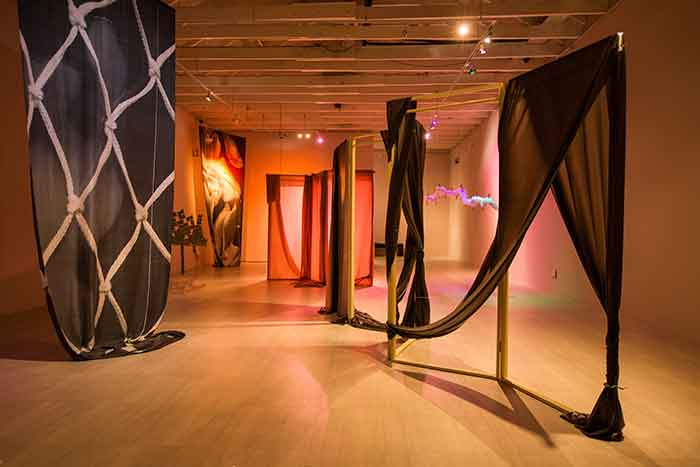Interview Laura Netz

Gallerist and art writer Christina J. Chua began her career in the visual arts while still in high school in Singapore, publishing her first art reviews in art and design periodicals, museum catalogues, and artist books. After graduating from university with a degree in literature, Chua worked at a contemporary art gallery in Asia, representing emerging to blue-chip artists. After several years of enduring a relentless art fair and exhibition cycle, she finally left this gallery and reoriented her direction and founded so-far online.
With a foot in the art market, she has worked at galleries and art fairs throughout Southeast, East Asia and the Middle East, representing and exhibiting a spectrum of emerging to blue-chip contemporary artists from around the world. As a writer, she has contributed to various international and Singapore art publications. Christina is committed to bridge-building in the Singapore art scene while developing a new generation of art patrons.
Through discussions with her artists, Christina J. Chua became interested in the tech industry. But the commercial art ecology in Singapore and Southeast Asia was less ready to absorb them into a still very traditional, painting-focused market. Thus, so-far online was established as a hybrid platform and artist incubator to offer a place to express the dynamics in the art market related to new technologies.
Every six months, so-far online presents an issue of global concern and invites artists, technologists and other collaborators to dialogue and establish conversations on critical and speculative perspectives across these disciplines. The reasons for this are the opacity of the art world, the will to enlarge artists’ audiences and the increase in the potentialities of researching meaningful differences and divergence from otherwise ordinary modes of thinking in mainstream technology. The platform is funded by the sales of contemporary artworks.


Right: Weixin Quek Chong, sft crsh ctrl (2018), mixed media, installation view, 8Q, Singapore Art Museum
For those that are not familiar with your work, tell us a little bit about your background and who is behind so-far?
I began my career in the visual arts while still in high school in Singapore, publishing my first art reviews in art and design periodicals, museum catalogues, and artist books. After graduating with a degree in English Literature, I worked at one of the best contemporary art galleries in Asia, representing emerging to blue-chip artists (they now have locations in Tokyo, Shanghai and Singapore).
This was where I gained exposure to the commercial art world and became acculturated to its stratifications, hierarchies and networks. In the midst of a relentless art fair and exhibition cycle, my first love was always writing, so I took a break to continue that and travel. When I returned home with greater clarity, I knew I wanted to avoid the hype and work with emerging artists. So I joined a smaller, Singapore-owned gallery that represented a few of them. After a year of working with this stable of younger artists and reestablishing my footing in the local art scene, I founded so-far.
How did you come out with the idea?
There were several core things that I wanted to achieve that led me to conceive so-far. Firstly, I wanted to write for an audience that extended beyond the art industry. I had already been writing for over a decade, and there was many a time when I asked myself, “Who really is reading this review of this exhibition that’s almost over?”
My co-founder already had a foot in the tech and maker industry, and many of the artists I wanted to work with were asking us how they could meet technologists to sharpen their ideas and research. So, it seemed natural to explore these interdisciplinary dialogues as a channel through which our audience could expand into other domains. Long-form essays and interviews then became a way to introduce these fringe readers to the research-based, experimental practices I was most committed to.
I also wanted to sustain the publication over a long term, and the gallery business model seemed more feasible than an advertising, subscription or a non-profit (self-financed) model. Selling art online (or over coffee with collectors) without the overheads of a gallery space would be a lightweight solution to paying writers what they deserved while supporting the artists too. I was convinced that so-far should not be confused with an art or design marketplace – of which there were already many – but that it was a publication and platform first. Likewise, the artworks that are for sale on the shop are mostly curated by way of the thematic arcs of the magazine.
Lastly, I wanted to work with unrepresented artists to develop and strengthen their careers. I noticed a telling gap that so-far could definitely fill. The artists I was interested in were mostly working with new media (thus their obvious leaning towards new technologies), but that also meant that the nascent commercial art ecology in Singapore and Southeast Asia was less ready to absorb them into a still very traditional, painting-focused market. so-far as a platform became a way I could introduce their work to channels and galleries that would otherwise be apprehensive to work with such avant-garde artists.
What was the biggest challenge you faced in its development?
Clarifying and communicating the positioning of so-far as a hybrid platform and an artist incubator. Along the way, as I began to work with my stable of artists, I knew I wanted to place them in established (brick-and-mortar) galleries by promoting them through the platform. Although the articles can be read online, these placements are done mostly off-line, and only very discreetly with a few galleries that I have personal relationships with. Lately, I’ve been working with an independent curator based in Istanbul, Teo Jing Yi, to bring the incubator more structure and volume beyond my activity as a solo artist agent.
What makes so-far different from other publications focused on the field of art and technology?
so-far is a hybrid between a publication, online gallery and artist incubator, so it functions in a more multi-hyphenated way, rather than the linear mode most publications adopt. In terms of the editorial content, I would say that the interdisciplinary dialogues between artists and technologists or other individuals in the neighbouring domains of governance, policy, or business set the platform apart.
A lot of changes are shaking the art world in the last years, with more and more presence of new technologies like ML and AI. What do you think are the new trends/topics that will reshape contemporary art inspired by new technologies in the coming years?
In the next 10 or more years, I believe that we will see more art on the cyborg self and augmented intelligence as contemporary artists grapple with how our consciousness is evolving along with the tech. I’m also excited by how spirituality in its many forms and manifestations will be transposed or translated by new technologies and how artists will both stimulate and document this shift.
What would be your biggest curating extravaganza?
I am working with several partners to bring together a travelling exhibition on the Anthropocene as it manifests uniquely throughout the Malay Archipelago and the South China Sea. We hope to join several fringe galleries in island-bound cities through this extended programme from late 2020 to 2021.
You couldn’t live without…
My partner, Cliff. He’s run a gallery for the past 6 years and always offers me steady emotional and practical support. Admittedly, we make an odd combination because while I’m all about incipient art, he deals in deep history – dinosaurs and plant fossils.






